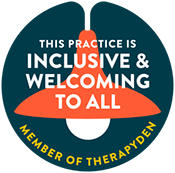Premenstrual Dysphoric Disorder (PMDD) and Premenstrual Syndrome (PMS) are often mentioned interchangeably, but understanding the distinction is crucial, especially for mental health awareness. While PMS is relatively common and typically involves mild emotional and physical symptoms like irritability, bloating, and fatigue, PMDD is a far more severe condition that can significantly disrupt daily life.
Women with PMDD may experience intense mood swings, debilitating anxiety, deep sadness, and even thoughts of hopelessness, often in the week leading up to menstruation. Recognizing these differences is key to seeking appropriate support and treatment rather than dismissing the symptoms as “just part of being a woman.”
From a mental health perspective, PMDD is not simply a hormonal inconvenience, it is a serious mood disorder with major impacts. The emotional and cognitive symptoms can mimic or exacerbate conditions like depression and anxiety, making timely diagnosis and intervention essential. Raising awareness about PMDD helps reduce stigma and empowers those affected to access mental health care, explore coping strategies, and find relief. Understanding the difference between PMS and PMDD is the first step toward validating the lived experiences of those who face this challenging condition each month.


















